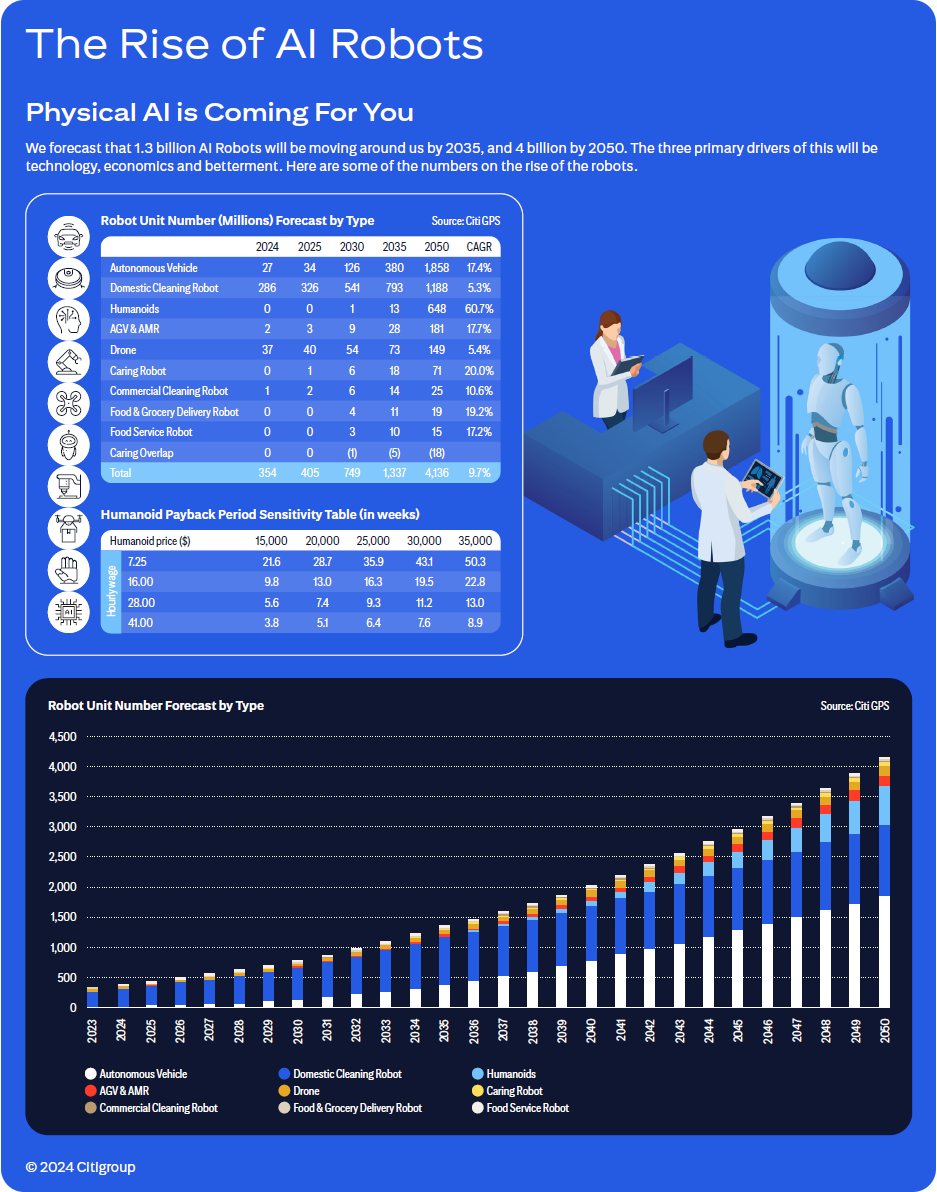The Rise of AI Robots

Billions of AI-robots and humanoids will soon be among us.
In this new Citi GPS report, our analysis suggests there will be 1.3bn AI-robots by 2035 and 4bn by 2050. There are three primary drivers of this new market.
Technology: Advances, especially in Artificial Intelligence (AI) have dramatically changed the outlook for robots.
Economy: Robots can provide solutions to labor shortages. Shortages are exacerbated by aging demographics and more restrictive immigration policies. In addition, the payback period for capable robots looks increasingly attractive versus humans. Labor accounts for over 50% of GDP globally, underlining the potential size of the opportunity.
Betterment: Technological progress has freed people from mundane tasks and increased leisure time. Continuing this trend, AI-robots will offer people access to robotic cleaners, butlers, chauffeurs, assistants, and carers.
AI robots can now see, learn, move, talk, take instruction into code and then act. Only recently has multi-modal AI allowed all these elements to fit together.
AI in turn is becoming embodied and physical. In parallel have come advances in dexterity. Some robots can now thread a needle or suture a kernel of corn. Robots are on the move, from theory to reality and from useless to useful.
The report focuses on AI-enabled robots that move, looking at uses including cleaning, driving and delivery, to use in the industrial, construction, retail, hospitality, and care sectors. We also look at the challenges that deserve attention, debate, and solutions.

Despite the challenges, we conclude that a huge new (non-human) market is being born. And that, like it or not, AI robots are here to stay.



